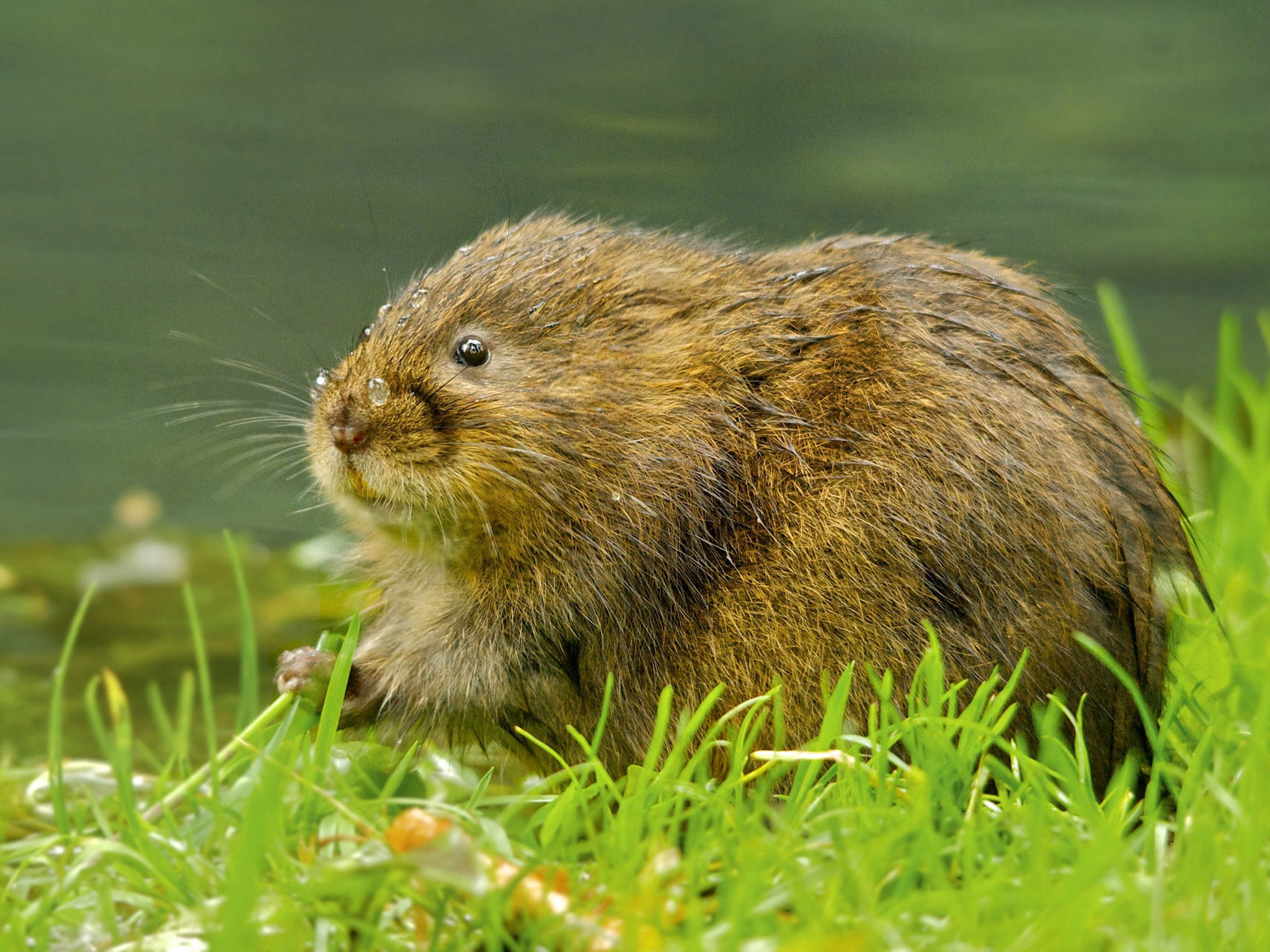Save our voles: Water vole numbers down a fifth in just three years
Experts say more must be done to secure the future of the 'charismatic species'

Water vole numbers across the UK have dropped by more than 20 per cent in just a few years, crushing the hopes of a comeback that followed positive numbers in 2010, according to experts.
The stubby-nosed creatures used to be widespread throughout the country’s waterways, but a number of factors have seen populations plummet by as much as 95 per cent in the past four decades.
Information from the water vole database shows that in the face of habitat loss, weather extremes and the deadly and invasive American mink, smaller colonies in hundreds of areas have been unable to cope.
Data published in 2010 tracking groups from 2004-2008 indicated that populations were making a comeback, good news for conservationists who have always said we can save the voles if the effort is put in.
Now, though, that certainty has been put in jeopardy. Those last figures saw the animals present in 874 10km squares – from 2007 to 2011, they were recorded in just 683, a 22 per cent drop in colony numbers.
Despite the bad news, the Environment Agency and Wildlife Trust said strongholds remained in areas like the uplands of Snowdonia, the wetlands of the English fens and the Somerset Levels.
But Paul Wilkinson of the Wildlife Trusts said the latest data was a real cause for concern, and warned: “Not enough is being done to secure this charismatic species' future.”
The evidence of disappearing numbers was compelling, he warned.
“Strongholds do remain, and these are often located in areas which support more extensive wetland habitats, such as the fens, or head streams in upland areas.
“We must ensure these strongholds persist and renew efforts to save this much-loved species, through targeted conservation action and sustained monitoring programmes,” he urged.
Conservationists said they needed more resources, and that there were measurable benefits to be seen from efforts to protect suitable habitats and control mink numbers.
The non-native predator, in particular, has a devastating impact once it finds a water vole colony. They are faster swimmers, will repeatedly prey on the same group, and female mink are small enough to get into the voles’ burrows.
Conservationists use rafts with soft clay sides to monitor mink, and once they see evidence of paw-prints they lay traps to catch and humanely kill the animals.
Alastair Driver, Environment Agency national conservation manager and chairman of the UK water vole steering group which produced the analysis, said: “Creating new habitat helps protect our native species, like water voles and otters, and helps tackle climate change.
“The Environment Agency has created nearly 5,000 hectares (12,400 acres) of wetland and river habitats in the last 10 years and we hope to double this in the next 10.
“Added to this, our rivers are at their healthiest for over 20 years, but control of the American mink is essential if water voles are to benefit from these healthier rivers and new habitats.”
Immortalised by the character of "Ratty" in The Wind in the Willows, water voles are protected in the UK under the Wildlife and Countryside Act, 1981.
Despite the overall drop in numbers, reintroductions have proved successful in such places as the River Axe in Devon and London Wetland Centre, the experts said.
Subscribe to Independent Premium to bookmark this article
Want to bookmark your favourite articles and stories to read or reference later? Start your Independent Premium subscription today.

Join our commenting forum
Join thought-provoking conversations, follow other Independent readers and see their replies